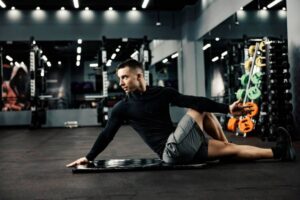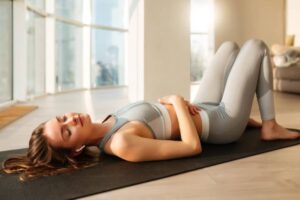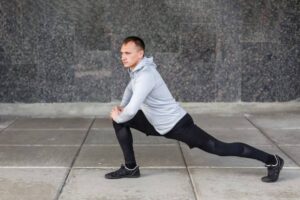The Fitness Blog

Comparing Foam Rolling vs Percussion Massage: Which Recovery Tool Wins?
You’ve just crushed a workout. Muscles are tight, soreness is creeping in, and you know recovery matters. But here comes the question—should you reach for the foam roller or grab the massage gun?
In recent years, muscle recovery tools have exploded in popularity, especially foam rollers and percussion massagers. Both promise improved circulation, faster recovery, and reduced muscle tightness—but they do it in very different ways.
So, which one should you choose? The truth is, it depends on your body, your routine, and what you’re looking to get out of your soft tissue therapy.
In this guide, we’ll discuss the foam roller vs. massage gun debate in practical, relatable terms, exploring the benefits, limitations, use cases, and how to decide what’s best for your recovery needs.
Why Recovery Tools Matter in the First Place
It’s Not Just About Feeling Better
If you train regularly—whether that’s lifting weights, running, CrossFit, or team sports—your muscles experience microtrauma.
Recovery tools support your body by:
- Enhancing circulation
- Reducing delayed onset muscle soreness (DOMS)
- Breaking up adhesions in the fascia
- Restoring range of motion
- Preparing muscles for the next session
Using tools like foam rollers or massage guns isn’t a replacement for rest, sleep, and nutrition, but they’re fantastic complements to speed up recovery and reduce tightness.
The Basics: What Are Foam Rollers and Massage Guns?
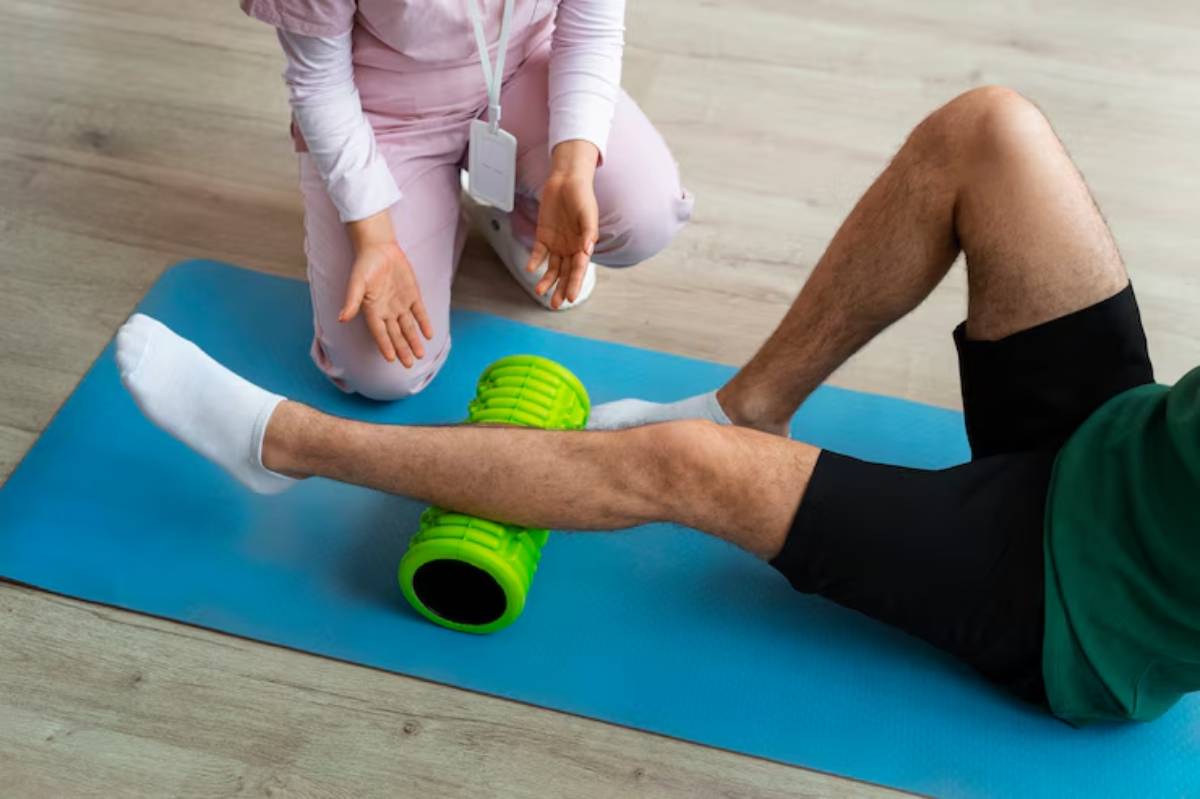
What Is Foam Rolling?
Foam rolling is a form of self-myofascial release (SMR). You apply your body weight over a cylindrical piece of foam, slowly rolling over muscles and connective tissue to reduce tension.
Types of foam rollers:
- Smooth rollers (less intense, beginner-friendly)
- Textured rollers (target knots and trigger points)
- Vibrating rollers (combine movement with frequency)
What Is Percussion Massage?
Percussion therapy uses a handheld massage gun to deliver rapid, repetitive pulses into muscle tissue. It’s essentially a high-speed form of deep-tissue massage without needing a therapist.
Massage gun features may include:
- Multiple speed settings
- Interchangeable heads for different body parts
- Quiet or high-powered motors
- Pressure sensors or recovery tracking apps
The Science Behind Soft Tissue Therapy
Both tools rely on manipulating soft tissue—primarily fascia and muscle—to support mobility and reduce soreness. The idea is to release tension, stimulate blood flow, and improve neuromuscular coordination.
Foam Rolling Science
- Encourages mechanical relaxation of fascia
- Increases range of motion without reducing strength
- Can reduce muscle soreness after workouts
- Aids neuromuscular control when used pre-exercise
Studies have shown that even a brief foam rolling session (as little as 30 seconds per muscle group) can help reduce post-exercise soreness and improve flexibility.
Percussion Massage Science
- Delivers percussive pressure waves deep into tissue
- Stimulates proprioceptors (body awareness sensors)
- Increases muscle oxygenation and blood flow
- May reduce soreness faster than foam rolling for some people
Emerging studies suggest massage guns may be more effective than static stretching and can match the benefits of manual sports massage when used correctly.
Foam Roller vs Massage Gun: Head-to-Head Comparison
| Category | Foam Roller | Massage Gun |
| Ease of Use | Requires floor space and positioning | One-handed operation, very convenient |
| Intensity Control | Bodyweight controlled | Multiple speeds and heads offer precision |
| Best for | Broad muscle areas (quads, lats, hamstrings) | Smaller muscles and trigger points |
| Cost | Affordable (starting ~£10–£30) | Premium (ranges from £60–£300+) |
| Learning Curve | Some technique required | Easier for beginners |
| Portability | Lightweight but bulky | Compact but requires charging |
| Quietness | Silent | Varies (some models are loud) |
| Time Efficiency | Slower—requires rolling time | Fast—2–3 minutes per area |
Which Tool Is Best for You?
Let’s break this down by training style and personal needs:
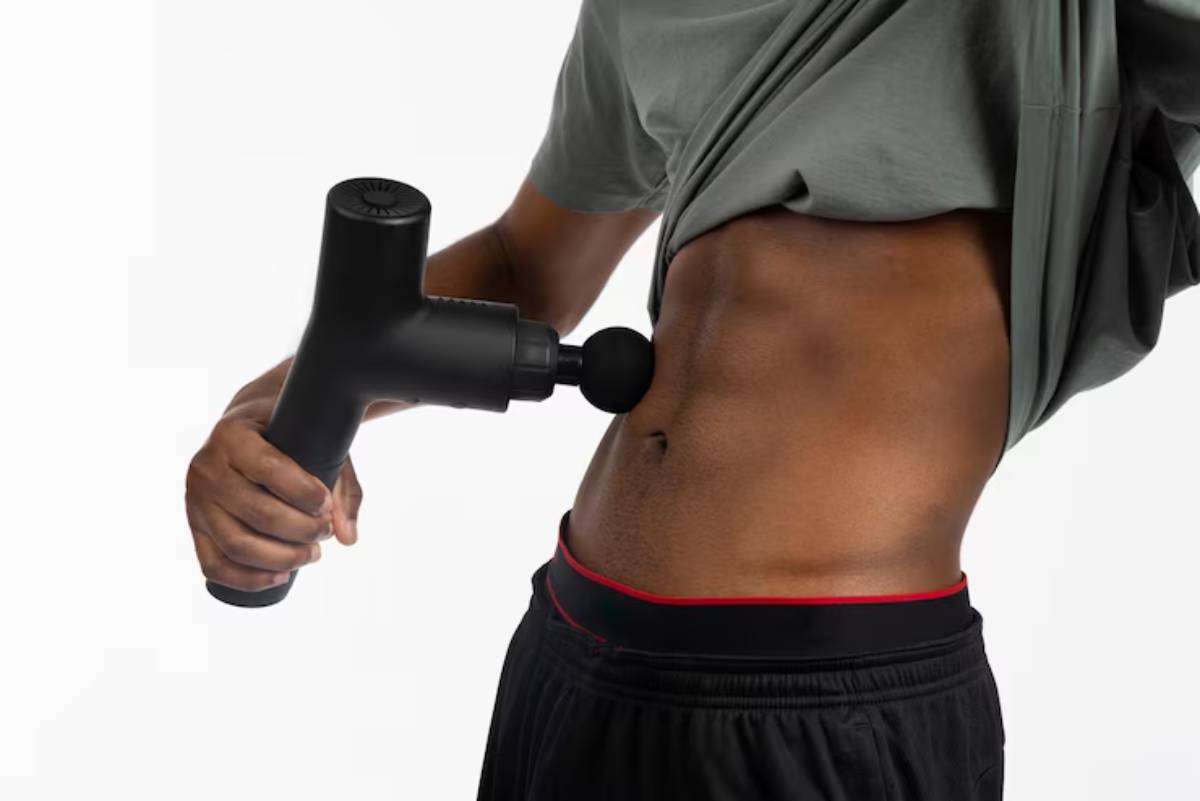
If You’re a Heavy Lifter or Power Athlete:
A massage gun might be more beneficial for targeting dense muscle tissue and specific tight spots before or after sessions.
However, foam rolling larger muscle groups like quads and glutes can help with range of motion drills—ideal if you’re working on deeper squats or hip extension. Read more on how to enhance squat depth with hip mobility.
If You Sit All Day or Have Postural Tension:
A foam roller is excellent for working out general tightness in the thoracic spine, IT bands, and hip flexors. It encourages full-body motion and promotes postural reset.
Massage guns can still help here, especially around the traps or shoulders, but foam rolling tends to produce more lasting mobility changes when used regularly.
If You Have Limited Time:
The massage gun wins for speed. Two minutes of percussive therapy per muscle group can quickly prepare you for a session or calm you down post—workout.
That said, foam rolling with breath control can double as a downregulation technique to ease stress and reset your nervous system, especially valuable if you pair it with breathwork. Learn how to combine breathwork with recovery stretching.
If Budget Matters:
Foam rollers are significantly more affordable and don’t require charging. If you’re just starting out or want a budget-friendly option that works across the whole body, a foam roller is a great starting point.
When to Use Each Tool
Foam Rolling Is Ideal:
- Before workouts (to warm up and prep tissues)
- After workouts (to downregulate and relax)
- On rest days (as part of mobility circuits)
Percussion Massage Works Best:
- As a quick pre-workout wake-up
- Between sets to stay loose
- For acute tightness or knots
- While travelling or short on time
Using both tools in tandem can also be highly effective. For example, you could use the massage gun for tight spots and then follow with foam rolling to promote full-range movement.
How to Use These Tools Safely
With Foam Rollers:
- Avoid rolling directly over joints or bones
- Don’t rush—slow, controlled movement is key
- Focus on areas that feel tight, not painful
- Combine with active movement when possible
With Massage Guns:
- Start on low speed and gradually increase
- Keep it moving—don’t hold pressure too long on one spot
- Avoid using on inflamed areas, recent injuries, or varicose veins
- Limit sessions to 1–2 minutes per muscle group
Always listen to your body—more pressure isn’t always better. Recovery tools should feel helpful, not punishing.
Final Thoughts: The Verdict?
So, foam roller vs massage gun—which comes out on top?
Truthfully, it’s not a competition—it’s about the right tool for the right job.
Use a foam roller if:
- You want a budget-friendly, full-body solution
- You enjoy longer recovery routines or mobility work
- You need better movement prep before lifting
Use a massage gun if:
- You want fast, targeted relief
- You need precision recovery between workouts
- You want something portable and time-efficient
If you can, use both. They complement each other beautifully, especially when built into a holistic training and recovery routine.



